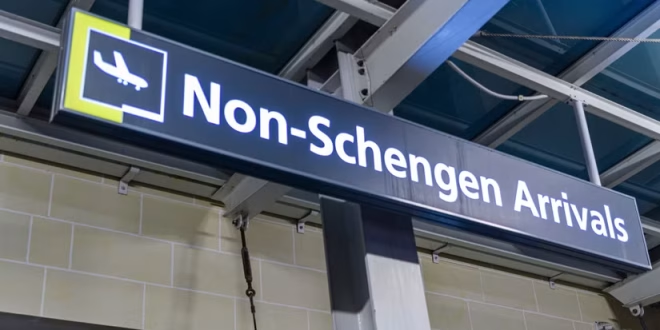CamerooOnline.ORG | Beginning on October 12, 2025, Europe will launch the Entry/Exit System (EES), a major change in how travelers from outside the European Union and Schengen area cross borders. Over the following months, until April 2026, the system will gradually replace the familiar practice of passport stamping with a digital, biometric method of recording arrivals and departures.
The purpose of the EES is straightforward: to modernize border management, reduce fraud, make crossings more efficient, and keep better track of who is entering and leaving the region. For travelers, this means that your entry and exit will no longer be marked by an ink stamp but by a digital record linked to your personal and biometric data.
How the System Works
When you arrive at an external Schengen border—whether by air, land, or sea—you will present your passport at a checkpoint or kiosk. Instead of simply receiving a stamp, your details will be entered into the system. At your first crossing after the rollout, you will also be asked to provide biometric data: a facial image and fingerprints, unless you are exempt. Children under twelve, for instance, will not be fingerprinted, though a photo may still be required.
Once your information is registered, it will be stored securely and used to verify your identity at future crossings. On later trips, your face or fingerprints will be checked against the stored record, and the system will automatically calculate how many days you have spent in the Schengen area. This removes any uncertainty about the well-known “90 days in 180 days” rule. When you leave, the system will again log your departure digitally, eliminating the need for a passport stamp.
Who Is Affected
The EES applies to travelers from non-EU and non-Schengen countries who are entering for short stays, whether they need a visa or are visa-exempt. For example, the new system will apply to citizens of the U.S., U.K., Canada, and Australia who visit Europe for up to 90 days.
Those who hold a long-stay visa or residence permit in a Schengen country are not included. EU and EFTA citizens are also unaffected. Special categories such as diplomats may fall under separate arrangements.
Benefits and Challenges
The European Union designed the EES to strengthen border security, reduce identity fraud, and better monitor overstays. It is also expected to make future crossings faster because biometric data will already be on file, removing the need for repeated manual checks. In the long term, it should create a more consistent and transparent process.
However, the initial rollout may come with delays. Collecting biometric data takes time, especially for first-time entrants. Border facilities will need to adapt, and the experience may vary from country to country. Some travelers also have concerns about data privacy, since fingerprints and facial scans will be stored for several years. While the EU emphasizes that this data will be protected under strict privacy laws, the idea of biometric collection may still make some uneasy.
Preparing for Travel
If you are planning to travel to Europe after October 2025, it is wise to prepare for slightly longer waits at border checks during the first months of the rollout. Have your passport ready, allow extra time for biometric registration, and be patient with the process as both travelers and officials adapt. Frequent travelers should keep an eye on updates, since procedures may evolve as the system becomes fully operational.
A New Era of Border Crossings
The Entry/Exit System represents a significant change in how Europe manages its borders. Instead of relying on stamps and manual checks, the system will rely on digital records and biometric verification. While this promises efficiency and stronger security in the long term, the transition will require some adjustment for travelers.
For most visitors, the biggest change will be at that first crossing—when fingerprints and a facial image are taken and stored. After that, each trip should be smoother and quicker. In many ways, the new system marks the end of an era, as the inked passport stamp gives way to a fully digital, twenty-first-century process.
 CameroonOnline.org Cameroon news, Actualité Camerounaise, live Web TV & Radio, World News and a lot more
CameroonOnline.org Cameroon news, Actualité Camerounaise, live Web TV & Radio, World News and a lot more




